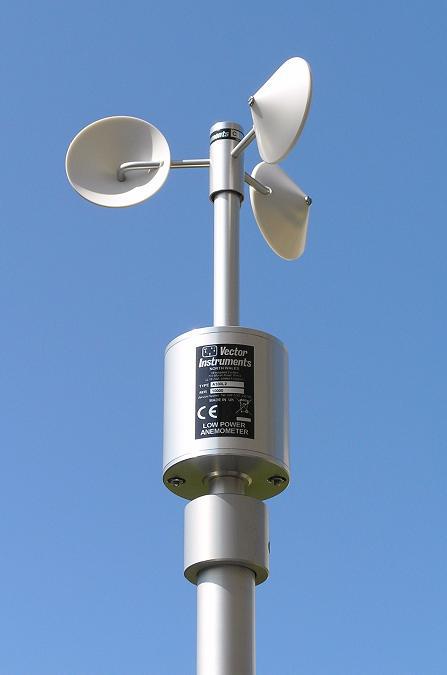Selecting the Right Anemometer: A Comprehensive Purchasing Overview
Selecting the Right Anemometer: A Comprehensive Purchasing Overview
Blog Article
Anemometers Introduced: Understanding Their Importance in Environmental Monitoring and Precaution
The function of anemometers in environmental monitoring and security measures is usually undervalued, yet their relevance is obvious. From weather forecasting to aviation safety, anemometers play a crucial function in giving accurate data that educates decision-making procedures and improves general safety.
History of Anemometers
The advancement of anemometers can be mapped back to the old worlds where simple wind measuring gadgets were first used. One of the earliest well-known anemometers was the hemispherical cup anemometer invented by Leon Battista Alberti in the 15th century.
In the 18th century, the distinguished researcher John Thomas Romney Robinson presented the Robinson anemometer, which featured four hemispherical cups installed on straight arms that extended from a main axis. This style came to be a standard in atmospheric dimensions as a result of its accuracy and reliability. Over the years, advancements in modern technology brought about the advancement of more contemporary anemometers, including ultrasonic anemometers and laser Doppler anemometers, providing raised precision and efficiency in gauging wind speed and instructions. The history of anemometers showcases an exceptional journey of innovation and progression in the area of meteorology.
Types of Anemometers
Throughout the field of meteorology, numerous kinds of anemometers have been established to precisely gauge wind rate and instructions. Sonic anemometers use ultrasonic signals to measure wind speed and direction properly. Hot-wire anemometers operate based on the principle that the cooling result of wind on a warmed cable is proportional to the wind speed.
Applications in Weather Forecasting
Having actually reviewed the various sorts of anemometers used in meteorology for measuring wind rate and instructions, it is vital to discover their practical applications in the area. Anemometers play a crucial role in meteorology by giving real-time and exact information on wind problems (anemometer). Meteorologists utilize anemometers to keep an eye on wind speed and direction to forecast weather condition patterns, problem cautions for extreme weather condition occasions like hurricanes, storms, and storms, and assess atmospheric problems for air travel safety
In meteorology, anemometers assist in recognizing neighborhood and local wind patterns, which are important for forecasting weather condition changes and establishing climatic trends. These devices are likewise utilized in study to study microclimates, city heat islands, and air contamination dispersion. Additionally, anemometers are used in agriculture to optimize plant administration practices, such as watering and pesticide application, based upon wind conditions.
Significance in Air Travel Safety And Security
An integral facet of making certain aeronautics safety depends on the careful surveillance of wind conditions utilizing anemometers. check my source Anemometers play a vital duty in aeronautics by supplying real-time data on wind rate and instructions, assisting pilots in making notified choices throughout landing, trip, and take-off. Strong and unforeseeable winds can considerably affect aircraft operations, making it essential for air travel authorities to rely upon accurate wind measurements to make certain the safety and security of passengers and staff.

In the dynamic setting of aviation, where also small modifications in wind rate and instructions can have profound effects, anemometers stand as important devices for promoting safe and safe air travel.
Role in Environmental Study
How do anemometers add to advancements in environmental study? Anemometers play a crucial role in environmental study by giving necessary data on wind speed and direction. This information is vital for understanding different atmospheric processes, such as air contamination dispersion, climate patterns, and environment change. By accurately measuring wind characteristics, anemometers assist researchers analyze the motion of pollutants airborne, examine the influence of commercial discharges, and predict the spread of impurities in the atmosphere.


Final Thought
To conclude, anemometers have played a critical duty in environmental surveillance and precaution. With a rich history and numerous kinds readily available, these gadgets have been widely used in meteorology, aviation security, and environmental research. Comprehending the importance of anemometers is essential for precisely measuring wind rate and direction, which is important for anticipating climate patterns, guaranteeing risk-free aviation operations, and performing ecological researches - anemometer. Their contributions to these fields can not be underestimated.
One of the earliest known anemometers was the hemispherical cup anemometer designed by Leon Battista Alberti in the 15th century. Over the years, article source innovations in her latest blog innovation led to the development of more modern anemometers, including ultrasonic anemometers and laser Doppler anemometers, providing boosted accuracy and efficiency in measuring wind rate and instructions. Hot-wire anemometers operate based on the concept that the cooling effect of wind on a warmed cable is proportional to the wind rate. Meteorologists make use of anemometers to keep track of wind speed and direction to forecast weather patterns, concern warnings for extreme climate occasions like hurricanes, twisters, and tornados, and examine climatic conditions for aviation safety.
Understanding the importance of anemometers is necessary for properly measuring wind speed and direction, which is essential for anticipating weather condition patterns, guaranteeing secure air travel operations, and performing ecological researches. (anemometer)
Report this page